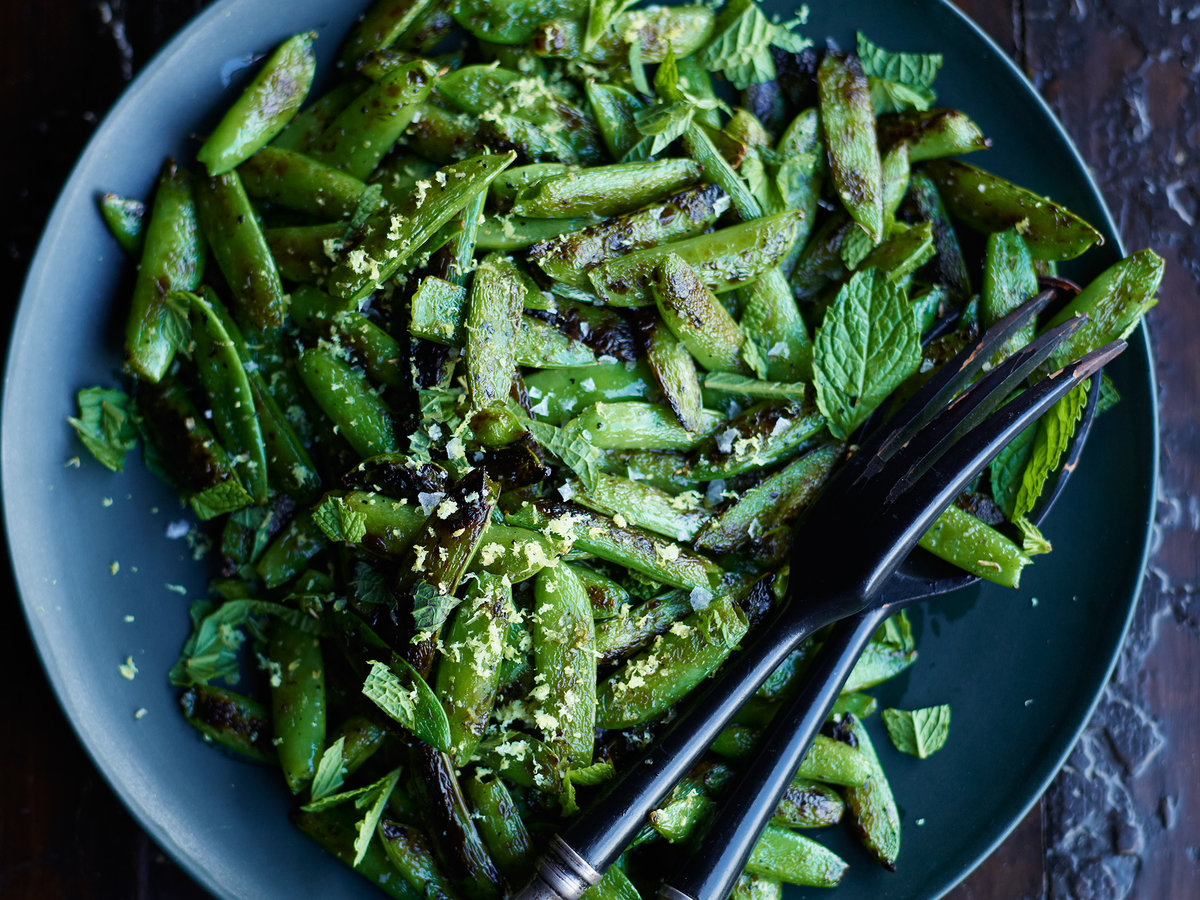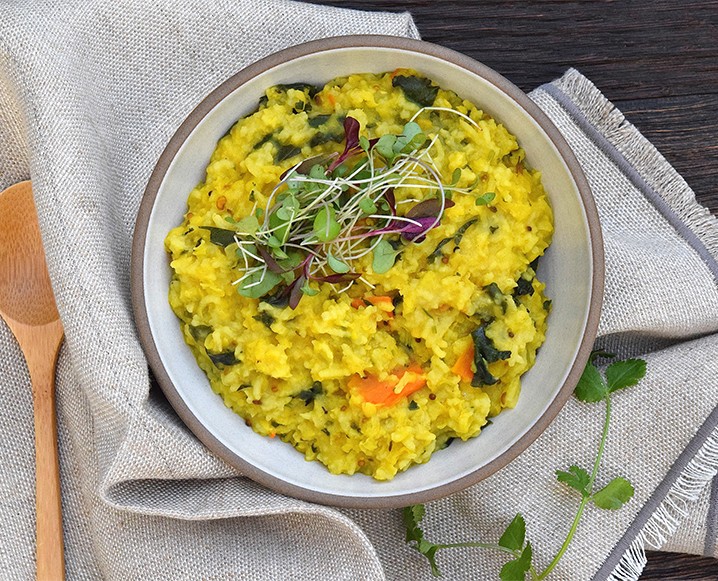Photo Credit: Food & Wine Magazine
No longer are peas considered the unpleasant soggy side dish mom poured from a can when something green was needed with our dinner. With nutrients like vitamins C, K, and A, folate, fiber and protein, sugar snap peas make the list as one of my all-time favorite veggies. A very versatile—sometimes even fancy—little addition to my present-day plate. And because of their high-water content (90%!), you’ll get a nice, crispy crunch in every bite. And fear not having seconds. These little pods are packed with enough water to keep you both hydrated and feeling fuller longer on few calories—make that 26 calories per cup!
Sweet peas (and string beans) are among the most easily digestible beans, and are thus an important source of fiber and protein. They can help you stay regular and feel satisfied after meals. Their naturally cooling properties are soothing to Pitta.
Below is my version of a similar dish I was taught to make at Barcelona Wine Bar in Brookline—and it’s so YUM! Ready for another plus of these little guys? They’re done in a snap! Now that’s what I call easy peasy 😊. To check out more recipes, simply scroll down. If you want to learn more about what foods are right for your body, let's have a conversation. Schedule a 30 minute free consultation call at natashawellness.com/appointment.
Blistered Sugar Snap Peas
Makes 2 servings
Ingredients
1 lb bag sugar snap peas
1-2 tsp toasted sesame oil
1 tbsp. toasted sunflower seed (or chopped peanuts)
1/2 tsp za’atar
½ tsp salt
Pinch of finishing salt (I like himalayan pink, sea, or pyramid salt)
Directions
1. Toast seeds or nuts on medium heat; set aside.
2. Add oil to pain on high heat.
3. Add peas, cover and cook, shaking pan until blistered on both sides.
4, Add salt while cooking. Peas are ready when blistered and brown.
5. Plate peas and sprinkle with seeds, finishing salt, and za’atar.
Side note: it would be tastier with peanuts but healthier with seeds
Resources:
Fruits & Veggies More Matters
http://www.fruitsandveggiesmorematters.org/about-fruits-and-veggies-more-matters
Sweet Peas
https://www.joyfulbelly.com/Ayurveda/ingredient/Sweet-Peas/123




